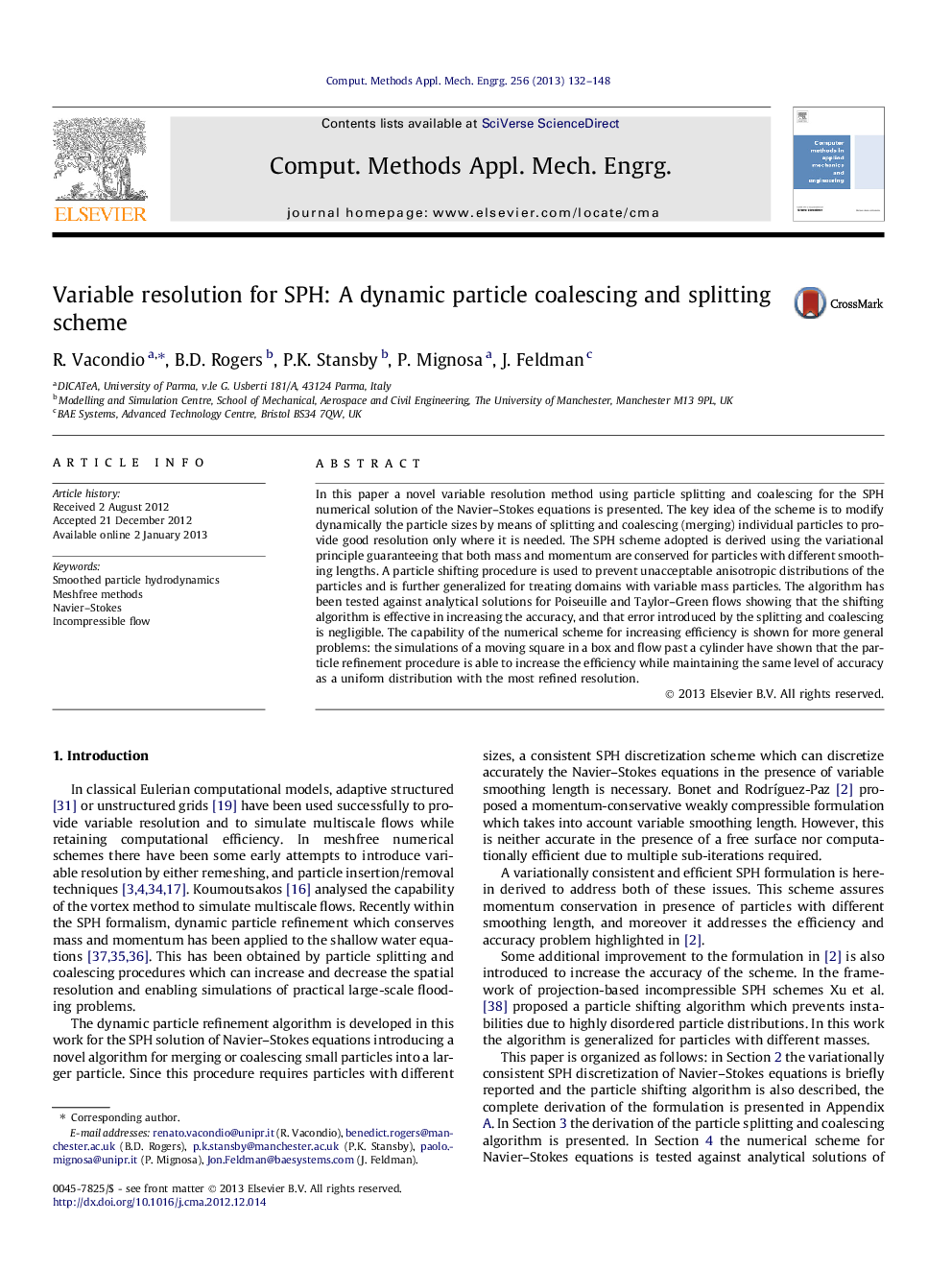| Article ID | Journal | Published Year | Pages | File Type |
|---|---|---|---|---|
| 498167 | Computer Methods in Applied Mechanics and Engineering | 2013 | 17 Pages |
In this paper a novel variable resolution method using particle splitting and coalescing for the SPH numerical solution of the Navier–Stokes equations is presented. The key idea of the scheme is to modify dynamically the particle sizes by means of splitting and coalescing (merging) individual particles to provide good resolution only where it is needed. The SPH scheme adopted is derived using the variational principle guaranteeing that both mass and momentum are conserved for particles with different smoothing lengths. A particle shifting procedure is used to prevent unacceptable anisotropic distributions of the particles and is further generalized for treating domains with variable mass particles. The algorithm has been tested against analytical solutions for Poiseuille and Taylor–Green flows showing that the shifting algorithm is effective in increasing the accuracy, and that error introduced by the splitting and coalescing is negligible. The capability of the numerical scheme for increasing efficiency is shown for more general problems: the simulations of a moving square in a box and flow past a cylinder have shown that the particle refinement procedure is able to increase the efficiency while maintaining the same level of accuracy as a uniform distribution with the most refined resolution.
► Novel SPH variable variationally derived algorithm with variable resolution included. ► Particle splitting and coalescing (merging) procedures. ► Particle shifting procedures for treating domains with variable mass particles. ► Testing against analytical solution for Poiseuille and Taylor–Green flows (including convergence analysis). ► Speed-ups of about 5, while maintaining the same level of accuracy as a uniform distribution with most refined resolution.
